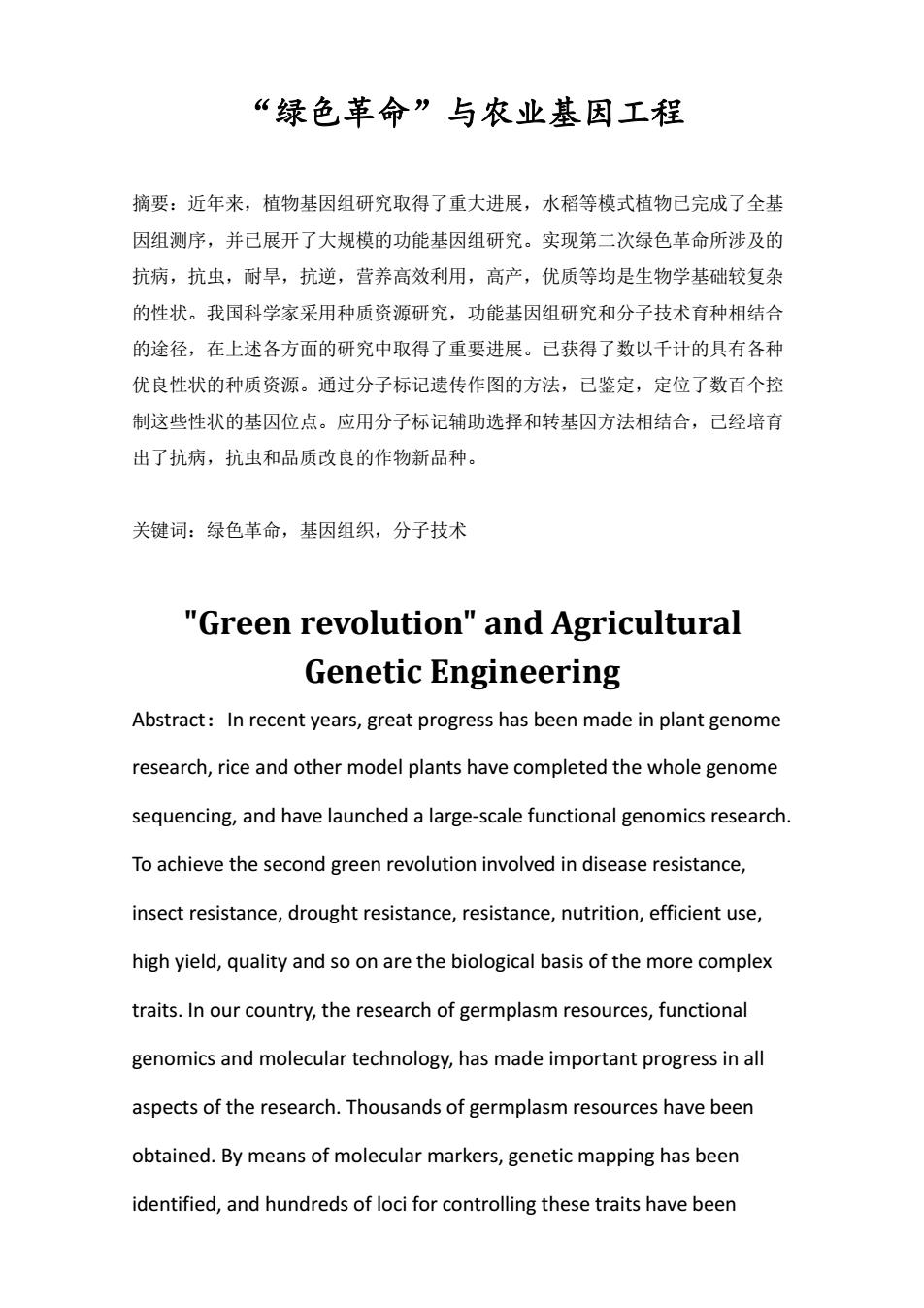正在加载图片...

“绿色革命”与农业基因工程 摘要:近年来,植物基因组研究取得了重大进展,水稻等模式植物已完成了全基 因组测序,并已展开了大规模的功能基因组研究。实现第二次绿色革命所涉及的 抗病,抗虫,耐旱,抗逆,营养高效利用,高产,优质等均是生物学基础较复杂 的性状。我国科学家采用种质资源研究,功能基因组研究和分子技术育种相结合 的途径,在上述各方面的研究中取得了重要进展。已获得了数以千计的具有各种 优良性状的种质资源。通过分子标记遗传作图的方法,己鉴定,定位了数百个控 制这些性状的基因位点。应用分子标记辅助选择和转基因方法相结合,已经培育 出了抗病,抗虫和品质改良的作物新品种。 关键词:绿色革命,基因组织,分子技术 "Green revolution"and Agricultural Genetic Engineering Abstract:In recent years,great progress has been made in plant genome research,rice and other model plants have completed the whole genome sequencing,and have launched a large-scale functional genomics research. To achieve the second green revolution involved in disease resistance, insect resistance,drought resistance,resistance,nutrition,efficient use, high yield,quality and so on are the biological basis of the more complex traits.In our country,the research of germplasm resources,functional genomics and molecular technology,has made important progress in all aspects of the research.Thousands of germplasm resources have been obtained.By means of molecular markers,genetic mapping has been identified,and hundreds of loci for controlling these traits have been“绿色革命”与农业基因工程 摘要:近年来,植物基因组研究取得了重大进展,水稻等模式植物已完成了全基 因组测序,并已展开了大规模的功能基因组研究。实现第二次绿色革命所涉及的 抗病,抗虫,耐旱,抗逆,营养高效利用,高产,优质等均是生物学基础较复杂 的性状。我国科学家采用种质资源研究,功能基因组研究和分子技术育种相结合 的途径,在上述各方面的研究中取得了重要进展。已获得了数以千计的具有各种 优良性状的种质资源。通过分子标记遗传作图的方法,已鉴定,定位了数百个控 制这些性状的基因位点。应用分子标记辅助选择和转基因方法相结合,已经培育 出了抗病,抗虫和品质改良的作物新品种。 关键词:绿色革命,基因组织,分子技术 "Green revolution" and Agricultural Genetic Engineering Abstract:In recent years, great progress has been made in plant genome research, rice and other model plants have completed the whole genome sequencing, and have launched a large-scale functional genomics research. To achieve the second green revolution involved in disease resistance, insect resistance, drought resistance, resistance, nutrition, efficient use, high yield, quality and so on are the biological basis of the more complex traits. In our country, the research of germplasm resources, functional genomics and molecular technology, has made important progress in all aspects of the research. Thousands of germplasm resources have been obtained. By means of molecular markers, genetic mapping has been identified, and hundreds of loci for controlling these traits have been